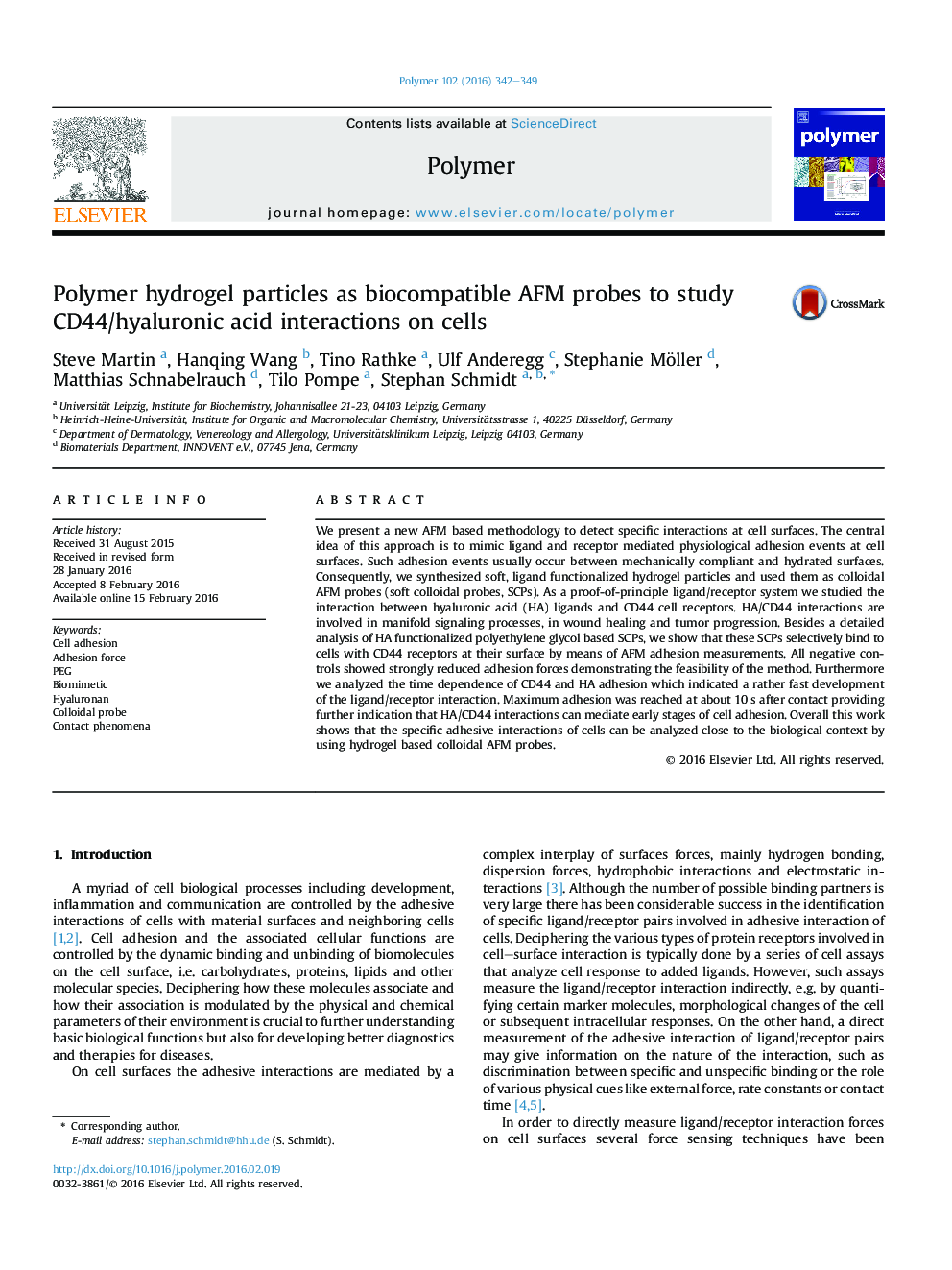| Article ID | Journal | Published Year | Pages | File Type |
|---|---|---|---|---|
| 5178578 | Polymer | 2016 | 8 Pages |
â¢Use of soft hyaluronic acid AFM probes as chemical and mechanical cell ECM mimic.â¢CD44 receptor presenting cells specifically interact with hyaluronic acid probes.â¢Cells lacking CD44 showed significantly reduced interaction forces.â¢CD44/hyaluronic acid interactions level off after about 30 s of contact.
We present a new AFM based methodology to detect specific interactions at cell surfaces. The central idea of this approach is to mimic ligand and receptor mediated physiological adhesion events at cell surfaces. Such adhesion events usually occur between mechanically compliant and hydrated surfaces. Consequently, we synthesized soft, ligand functionalized hydrogel particles and used them as colloidal AFM probes (soft colloidal probes, SCPs). As a proof-of-principle ligand/receptor system we studied the interaction between hyaluronic acid (HA) ligands and CD44Â cell receptors. HA/CD44 interactions are involved in manifold signaling processes, in wound healing and tumor progression. Besides a detailed analysis of HA functionalized polyethylene glycol based SCPs, we show that these SCPs selectively bind to cells with CD44 receptors at their surface by means of AFM adhesion measurements. All negative controls showed strongly reduced adhesion forces demonstrating the feasibility of the method. Furthermore we analyzed the time dependence of CD44 and HA adhesion which indicated a rather fast development of the ligand/receptor interaction. Maximum adhesion was reached at about 10Â s after contact providing further indication that HA/CD44 interactions can mediate early stages of cell adhesion. Overall this work shows that the specific adhesive interactions of cells can be analyzed close to the biological context by using hydrogel based colloidal AFM probes.
Graphical abstractDownload high-res image (285KB)Download full-size image
